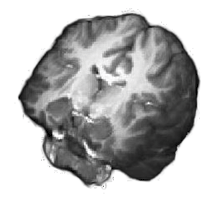|
Using fMRI to investigate expectancy analgesia in acupuncture.
Project Leader: Randy Gollub, MD, PhD
 Randomized clinical trials (RCTs) show that acupuncture can be an efficacious therapy for diverse pain conditions. While the overwhelming number of RCTs with ‘no treatment’ or ‘standard care’ controls demonstrate acupuncture’s clinical value, some trials fail to detect a difference between genuine (verum) and sham acupuncture. A recent meta-analysis reports that patient’s expectation of pain relief was the most robust predictor of treatment efficacy, regardless of group assignment (verum or sham acupuncture). Neuroimaging research has begun to implicate testable mechanistic hypotheses for both acupuncture and placebo analgesia. Importantly, studies in healthy subjects from the first five-years of support from this Centers of Excellence award provide evidence that verum and sham acupuncture, in the context of positive expectation, both have significant pain relieving capacities in healthy subjects -- but the underlying brain mechanisms are separable and clearly distinct. The current proposal will test the hypothesis that the patterns of brain activity associated with verum and sham acupuncture observed in healthy subjects are replicated in chronic pain patients. To test this hypothesis, we propose to extend our experimental approach to the study of the neurocircuity underlying modulation of chronic pain due to osteoarthritis (OA) of the knee by verum and sham acupuncture. We chose OA to study based on the outcomes of multiple recent, large clinical trials and two recent meta-analyses which found that acupuncture provided significant, small, short-term improvements in pain and because a great deal of heterogeneity in individual response exists in these trials. The results of these studies will clarify the contributions of expectancy and specific acupuncture treatment effects. Such a clarification could lead to refinements in acupuncture research methods and clinical practice. Randomized clinical trials (RCTs) show that acupuncture can be an efficacious therapy for diverse pain conditions. While the overwhelming number of RCTs with ‘no treatment’ or ‘standard care’ controls demonstrate acupuncture’s clinical value, some trials fail to detect a difference between genuine (verum) and sham acupuncture. A recent meta-analysis reports that patient’s expectation of pain relief was the most robust predictor of treatment efficacy, regardless of group assignment (verum or sham acupuncture). Neuroimaging research has begun to implicate testable mechanistic hypotheses for both acupuncture and placebo analgesia. Importantly, studies in healthy subjects from the first five-years of support from this Centers of Excellence award provide evidence that verum and sham acupuncture, in the context of positive expectation, both have significant pain relieving capacities in healthy subjects -- but the underlying brain mechanisms are separable and clearly distinct. The current proposal will test the hypothesis that the patterns of brain activity associated with verum and sham acupuncture observed in healthy subjects are replicated in chronic pain patients. To test this hypothesis, we propose to extend our experimental approach to the study of the neurocircuity underlying modulation of chronic pain due to osteoarthritis (OA) of the knee by verum and sham acupuncture. We chose OA to study based on the outcomes of multiple recent, large clinical trials and two recent meta-analyses which found that acupuncture provided significant, small, short-term improvements in pain and because a great deal of heterogeneity in individual response exists in these trials. The results of these studies will clarify the contributions of expectancy and specific acupuncture treatment effects. Such a clarification could lead to refinements in acupuncture research methods and clinical practice.
|

